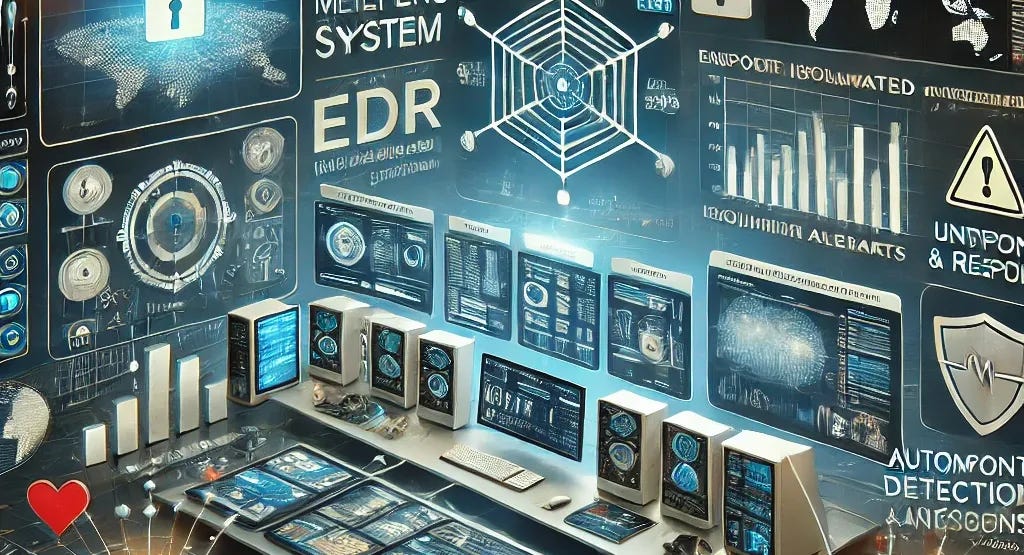Notes on Incident Response and Artificial Intelligence
Incident response is a structured approach for handling and managing the aftermath of a cybersecurity breach or attack. With the increasing sophistication and frequency of cyber threats, AI has become integral to augmenting incident response, providing security teams with tools that offer speed, precision, and adaptability in countering and recovering attacks.
The primary phases of incident response — preparation, detection, containment, eradication, recovery, and post-incident review — benefit significantly from AI-driven capabilities.
Preparation
Preparation is crucial for equipping organizations with the knowledge, tools, and policies necessary to handle potential incidents. AI plays a pivotal role in refining preparation by:
Automated Risk Assessments: AI analyzes historical incidents and identifies patterns and trends, highlighting vulnerabilities before they can be exploited. Machine learning algorithms can pinpoint risk areas, enabling teams to fortify defenses and create targeted response strategies.
Simulation and Training: AI-driven tools can simulate cyberattacks, offering hands-on training opportunities without real-world consequences. These simulations are dynamic, changing based on new threat data, which helps teams to practice responses to the latest attack techniques.
Playbook Generation and Optimization: AI can assist in developing incident response playbooks by analyzing past incidents and automatically suggesting optimal response strategies, prioritizing actions based on the severity of threats.
Detection
Detection is where AI shines by identifying unusual behaviors and potential threats faster and with higher accuracy than traditional systems. AI-driven detection includes:
Anomaly Detection: Machine learning algorithms are trained on regular system behaviors, making it easier to detect anomalies. Any deviation from the norm — such as unusual login patterns or unexpected data flows — is flagged as a potential threat. This allows for quick identification of issues before they escalate.
Threat Intelligence Integration: AI aggregates data from global threat intelligence sources, correlates this information with real-time activity within an organization’s network, and flags potential threats, providing early warning about emerging threats. AI’s ability to process and correlate large data sets allows for context-aware detection that improves accuracy.
Reducing False Positives: Traditional systems often generate excessive alerts, many of which are false positives. AI filters out these false positives by analyzing alerts in context, learning from each detection, and refining accuracy over time, thus allowing security teams to focus on genuine threats.
Containment
Once a threat has been identified, the next critical step is containment — isolating the threat to prevent further spread. AI’s role here includes:
Automated Network Segmentation: AI-powered systems can automatically segment and quarantine affected areas of the network based on threat assessments. This action limits the spread of malicious activity, ensuring only compromised segments are isolated without disrupting the broader network.
Dynamic Threat Intelligence for Immediate Action: By using real-time threat intelligence, AI can determine the extent of the compromise and deploy containment measures immediately, like limiting access to affected systems or disabling compromised accounts.
Adaptive Response Protocols: AI systems can evaluate threat severity and suggest containment measures based on pre-defined thresholds. For instance, in the case of malware detection, AI may recommend disconnecting affected devices from the network to prevent further infection.
Eradication
After containment, AI helps teams move swiftly to eradicate the threat, removing malicious software, securing compromised accounts, and restoring systems to a secure state.
Malware Analysis and Removal: AI-powered tools can analyze malicious files to determine their origin, structure, and behavior. With this information, AI can identify hidden components or backdoors that attackers might have left behind and ensure thorough removal.
Automated Patching and Configuration: AI systems can automatically patch known vulnerabilities that attackers exploited. By reviewing configuration data, AI can detect and correct misconfigurations that may have allowed unauthorized access.
Predictive Eradication Techniques: Using predictive analytics, AI can suggest other potential risk areas based on the attack vector used, ensuring that other parts of the network or similar assets are safeguarded.
Recovery
AI also assists in the recovery phase, where systems are restored to operational status, often with enhanced security measures to prevent future incidents.
System Restoration and Validation: AI can facilitate the recovery of compromised systems by suggesting configuration changes and scanning restored files for remaining threats. This ensures that only clean, secure data and applications are reintroduced to the environment.
Post-Incident Hardening: AI can analyze the incident to recommend enhanced security measures. For example, it may recommend stronger authentication, improved access controls, or additional monitoring for affected systems.
Automated Documentation: AI tools can document the recovery process, logging actions taken, vulnerabilities identified, and solutions implemented. This documentation is invaluable for understanding the incident and for future training or audits.
Post-Incident Review
AI's role doesn’t end when the incident is over. Post-incident analysis is vital for improving future response capabilities. AI supports this phase by:
Root Cause Analysis: AI can analyze data from the incident to identify the root cause, which might include weaknesses in policies, technology, or user behavior. By understanding the root cause, security teams can implement stronger preventive measures.
Incident Pattern Recognition: By correlating the recent incident with past ones, AI identifies patterns and trends, which can help in predicting and preparing for future incidents. AI can flag recurring vulnerabilities or weak spots in network architecture that need attention.
Performance Metrics and Reporting: AI provides actionable insights by measuring incident response performance, identifying time taken to detect, contain, and eradicate the threat. These metrics help teams refine and optimize their response strategies.
AI-Powered Tools in Incident Response
Some practical tools and technologies making these advancements possible include:
Security Information and Event Management (SIEM) Systems with AI Enhancements: AI-enhanced SIEMs aggregate and analyze data across the organization, providing real-time visibility and advanced alerting capabilities.
AI-Driven Endpoint Detection and Response (EDR): EDR tools use machine learning to identify and respond to endpoint-based threats quickly, offering immediate response capabilities such as isolating affected endpoints.
Behavioral Analytics and User Behavior Analytics (UBA): UBA tools track user behavior patterns, alerting on abnormal activities that may indicate a compromised account, insider threat, or compromised credentials.
Automated Incident Response Playbooks: AI-based playbooks automate standard response actions based on threat type and severity, enabling faster, more consistent responses.
Challenges and Future Considerations
While AI offers remarkable improvements to incident response, it also introduces challenges:
Algorithm Bias and False Negatives: AI models may inadvertently overlook certain threats if trained on biased datasets, making careful data selection essential.
Over-Reliance on Automation: AI-driven automation should complement rather than replace human decision-making, as certain nuanced incidents may require expert judgment.
Ethical and Regulatory Compliance: As AI collects and analyzes large amounts of data, it must align with regulatory standards to avoid privacy infringements and ensure responsible use.
Conclusion
AI is redefining incident response by enabling rapid detection, containment, and recovery, often autonomously. By assisting in each stage of the response process, AI not only improves speed and accuracy but also empowers security teams to focus on high-impact decisions, ultimately enhancing an organization’s overall resilience. However, AI’s potential must be managed with a balanced approach, integrating human oversight and ethical considerations to build a future where AI is a trusted partner in securing digital landscapes.




